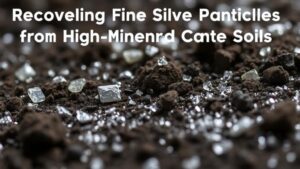Recognizing the Role of Deep-Seated Intrusions in Forming Ore Shoots
Recognizing the Role of Deep-Seated Intrusions in Forming Ore Shoots
The formation of ore shoots–concentrated zones of mineralization within a deposit–remains an area of considerable interest within the field of geology and mineral exploration. One key factor influencing the development of these ore shoots is the presence of deep-seated intrusions. This article discusses the role of these geological formations, examines their impact on ore shoot formation, and highlights relevant case studies to illustrate their significance.
Understanding Deep-Seated Intrusions
Deep-seated intrusions are bodies of crystalline rock formed from magma that has penetrated into surrounding existing rock formations but has not erupted onto the surface. e intrusions can take various forms, including stocks, batholiths, and laccoliths. They are typically associated with significant tectonic events and can create a range of geological environments conducive to mineralization.
- Stocks: Relatively small, tabular or irregular masses of igneous rock.
- Batholiths: Large, deep-seated intrusions that can cover extensive areas and form the core of mountain ranges.
- Laccoliths: Dome-like intrusions that force surrounding rock layers upward, often resulting in localized deformation.
The Mechanism of Ore Formation
The process by which ore shoots develop in relation to deep-seated intrusions occurs through a mechanism of hydrothermal activity. As magma cools and crystallizes, it releases volatile components, including water, gases, and metals. e fluids migrate through fractures and permeable rock layers, leading to the formation of ore deposits. The temperature and pressure conditions maintained during this process are critical for determining the mineral types deposited.
Influence of Tectonics and Magmatic Activity
The relationship between tectonic activity and deep-seated intrusions is pivotal in defining the nature of ore shoots. For example, in areas where tectonic plates converge or diverge, significant pressure and heat result in the generation of magma. As this magma intrudes into surrounding rocks, it alters the local geology, creating favorable conditions for mineralization. Studies indicate that tectonic stress can enhance fluid movement, thereby increasing ore concentration.
Case Study: The Porphyry Copper Deposits
One of the most illustrative examples of the role of deep-seated intrusions in forming ore shoots can be seen in porphyry copper deposits. Porphyry systems, characterized by disseminated copper mineralization associated with irregular intrusions, can extend over several kilometers and are often linked to large batholiths.
For example, the famous Escondida mine in Chile, which is the largest copper producer in the world, showcases how deep-seated intrusions can lead to the formation of significant ore shoots. heat and mineral-rich fluids from the underlying batholith have spurred the crystallization of copper minerals in concentrated veins, ultimately creating a massive resource of economically viable copper.
Factors Influencing Ore Shoot Geometry
The geometry of ore shoots, and their distribution within a deposit, is influenced by several interrelated factors, including:
- Depth of Intrusion: The depth at which the intrusion occurs can impact the extent and direction of mineralization.
- Hydrothermal Fluid Chemistry: The composition of the fluids can dictate what minerals are precipitated and in what forms.
- Fracture Patterns: The pre-existing fracture systems in surrounding rocks can channelate ore fluids and create concentrated deposits.
Conclusion and Implications for Mineral Exploration
The recognition of deep-seated intrusions and their role in forming ore shoots plays a vital role in mineral exploration strategies. Understanding the geological processes and conditions that favor mineralization allows geologists to better predict the locations of valuable deposits. This knowledge can lead to more efficient exploration efforts and ultimately contribute to resource sustainability.
To wrap up, as ore shoots remain a focus for mining operations worldwide, integrating geological insights into deep-seated intrusions will continue to be essential for advancing exploration success and optimizing resource extraction.



